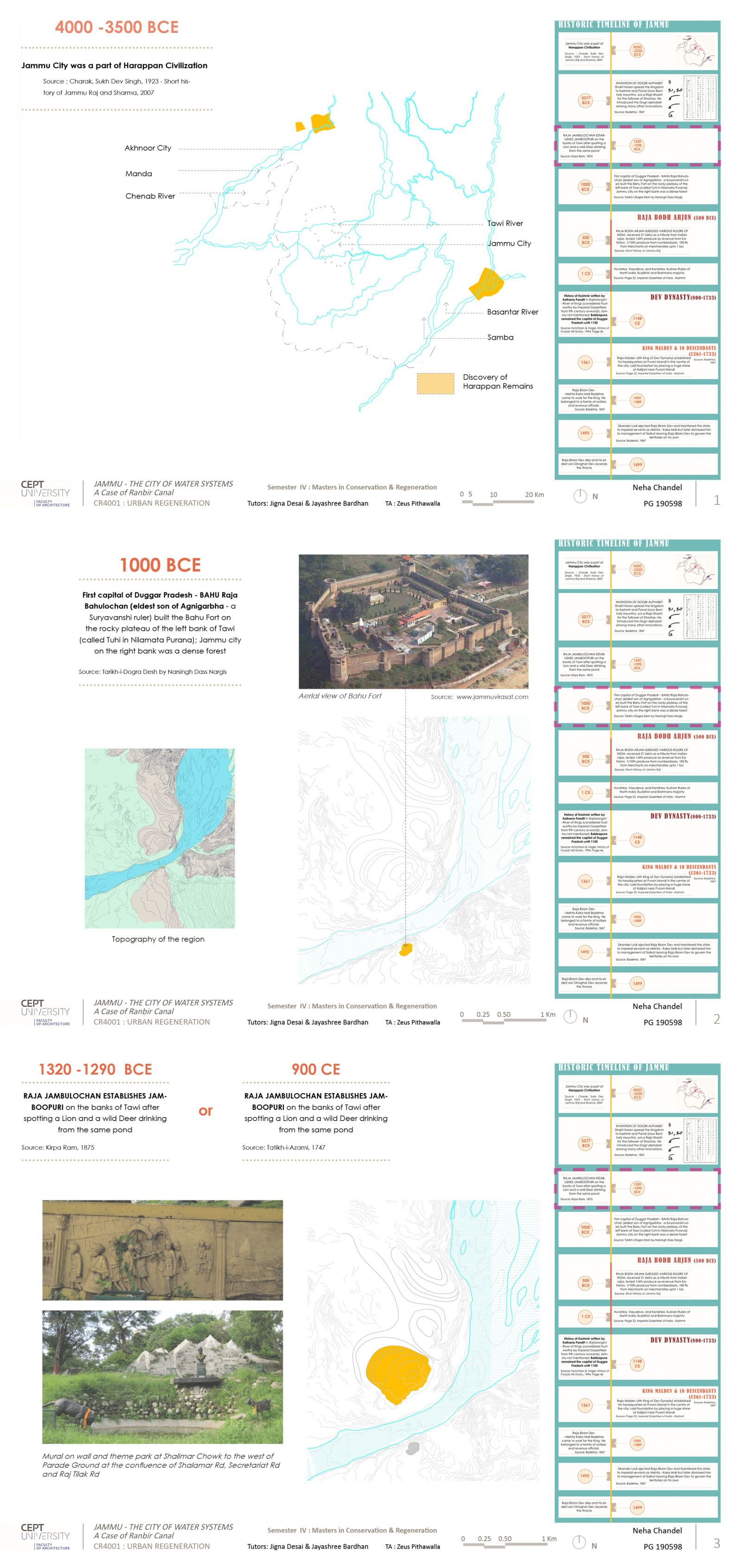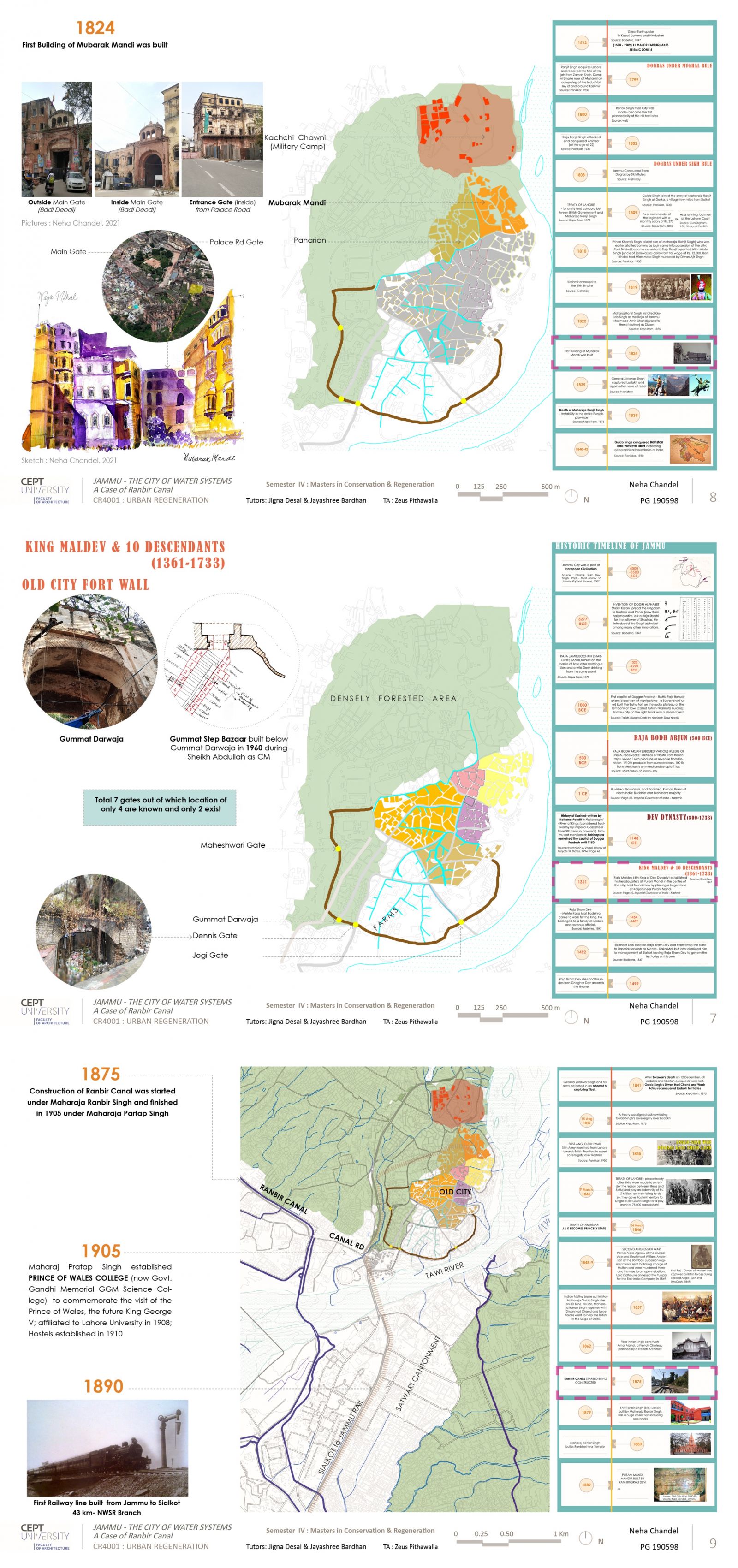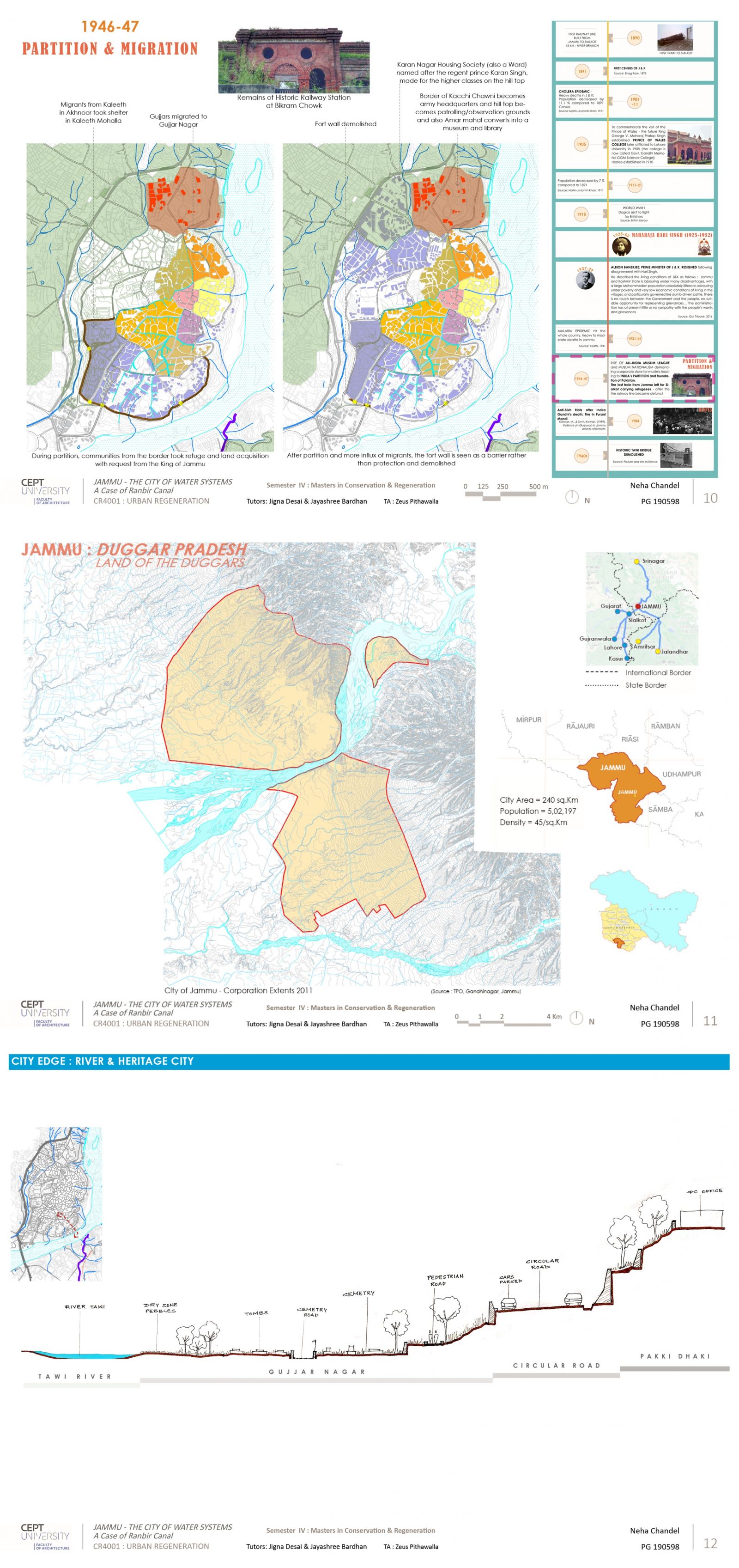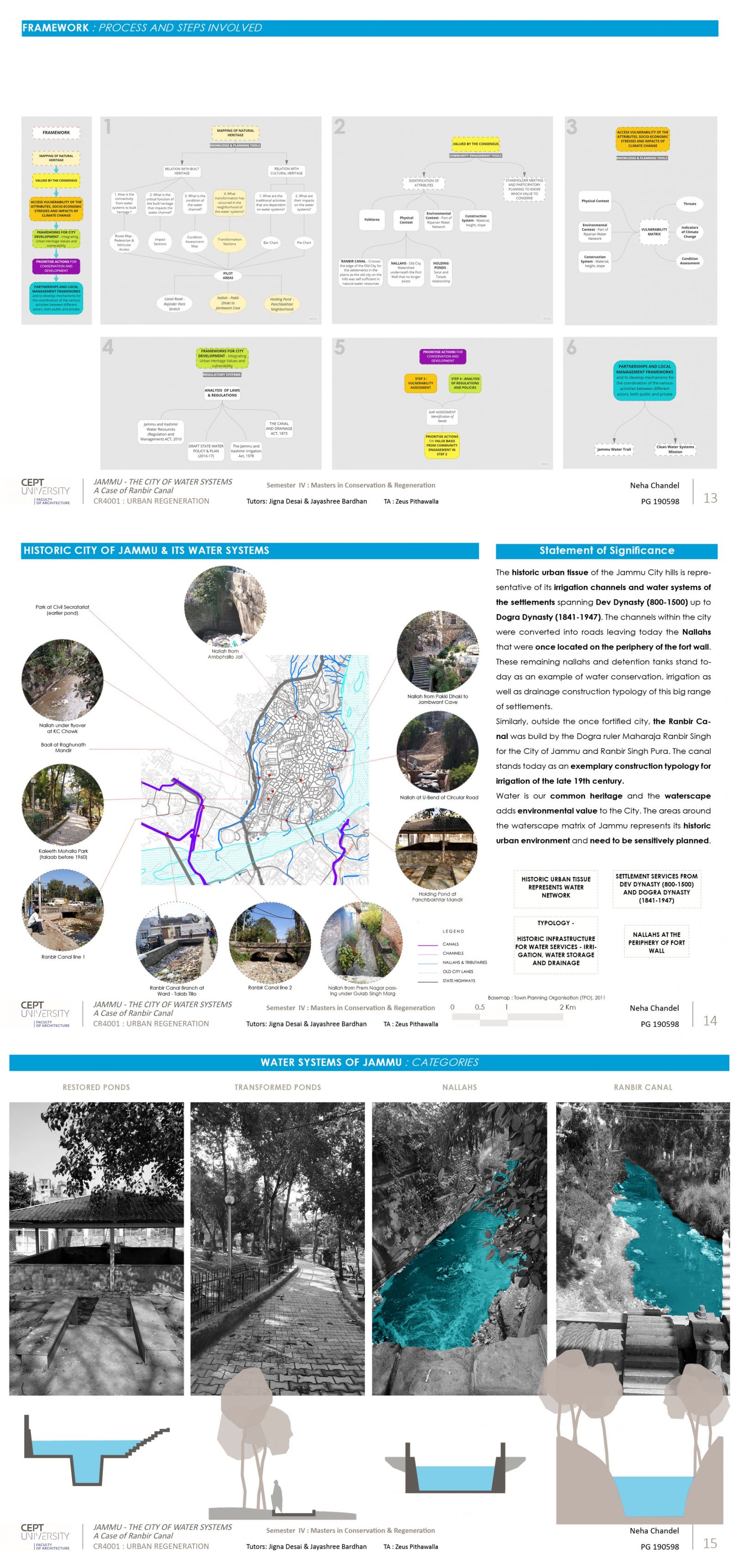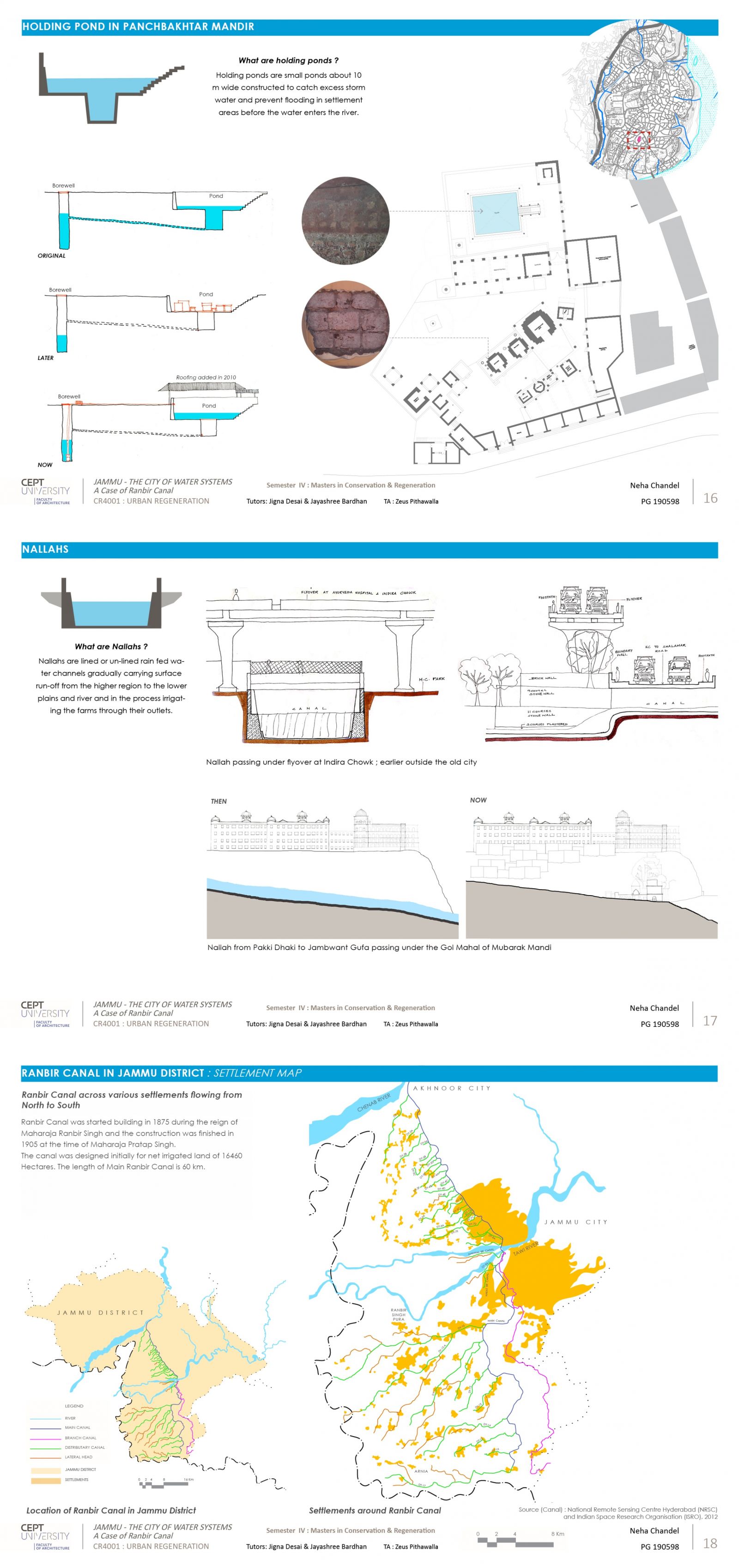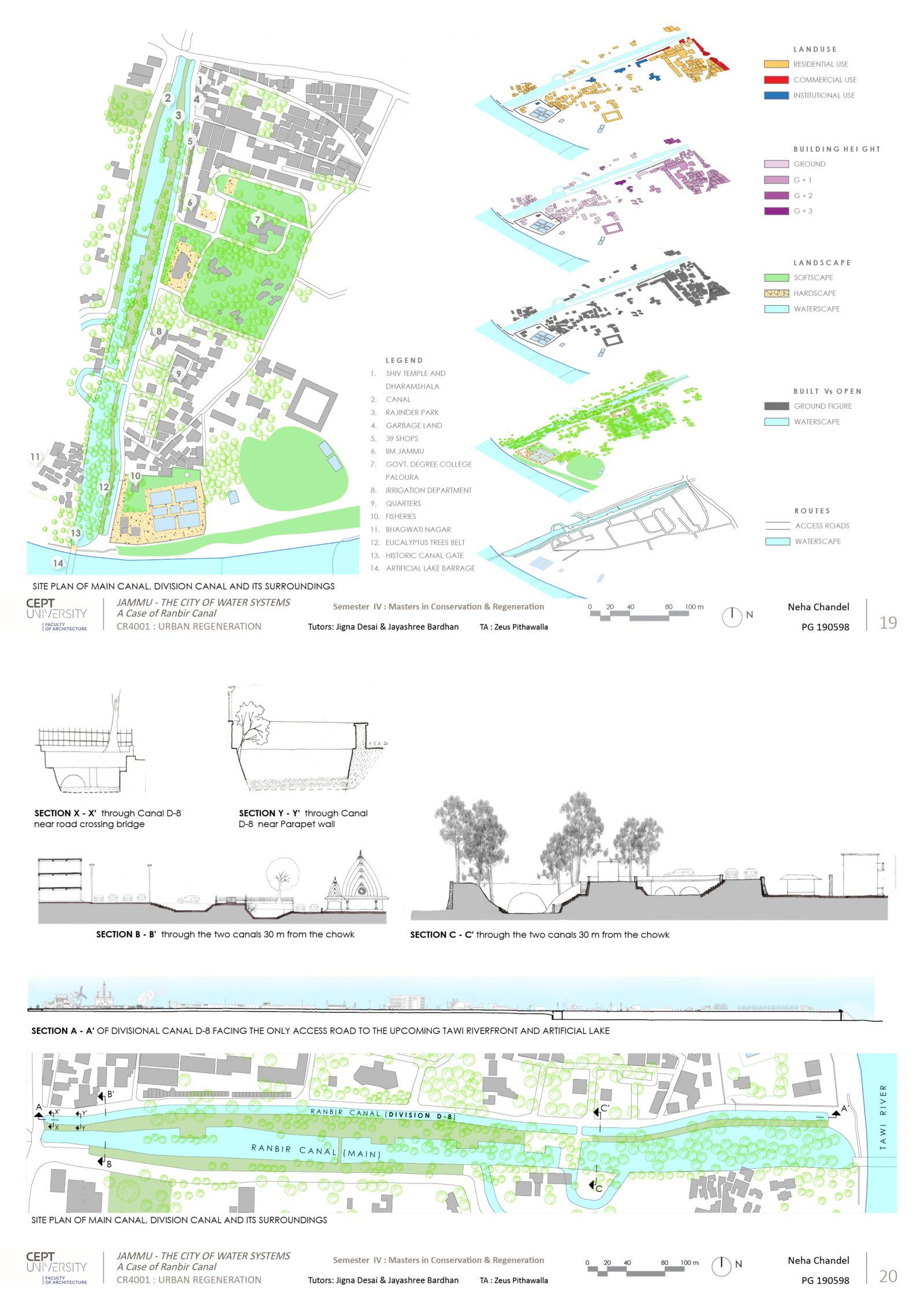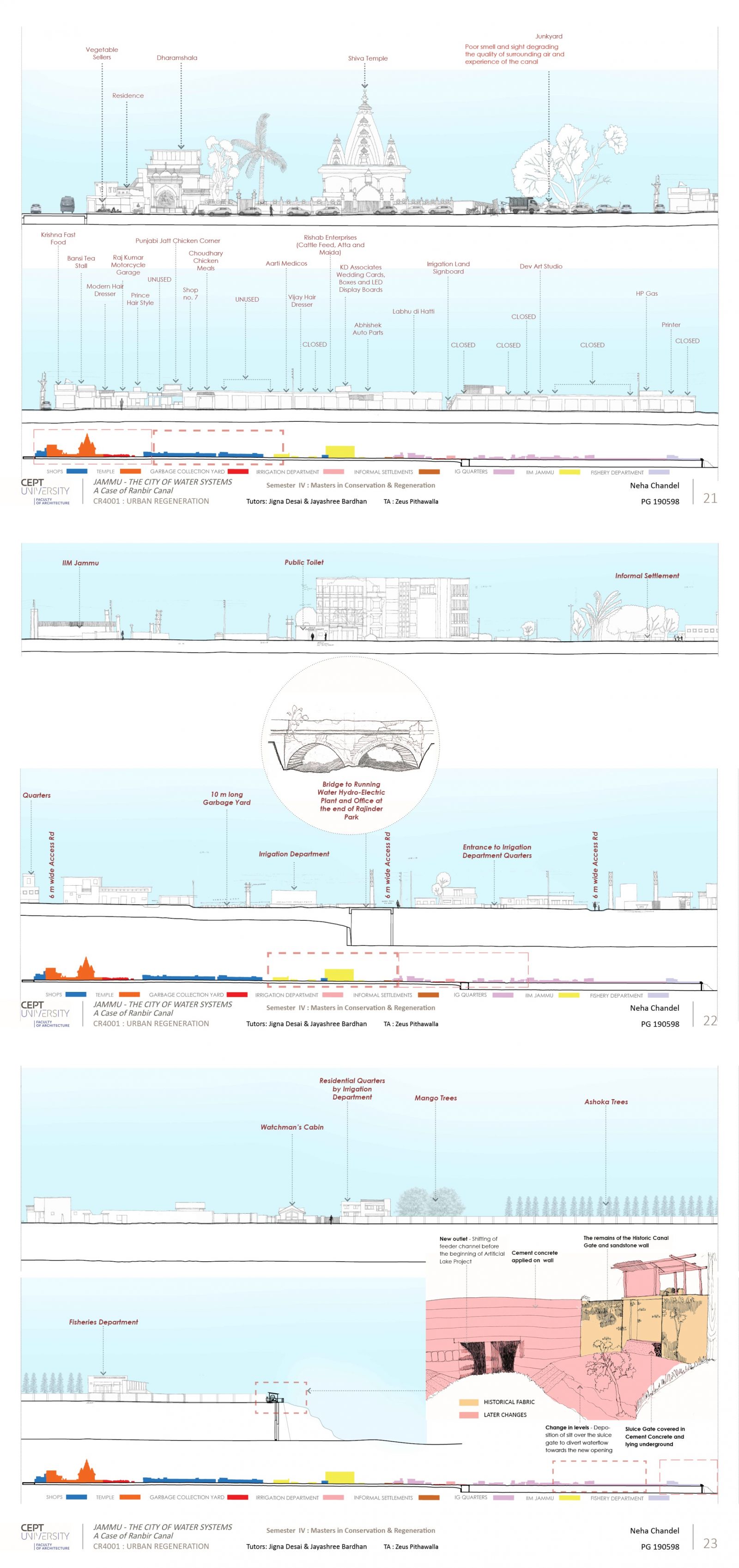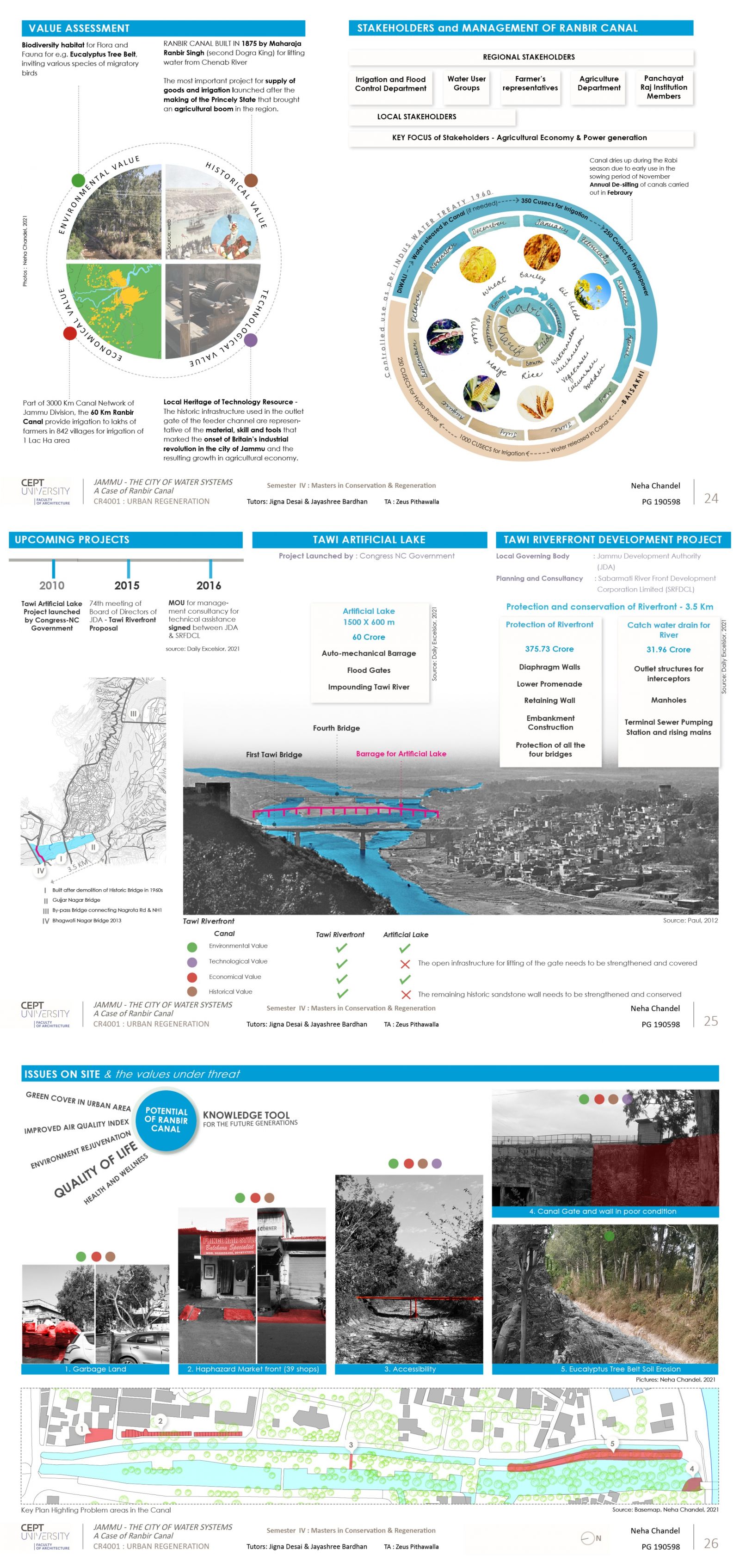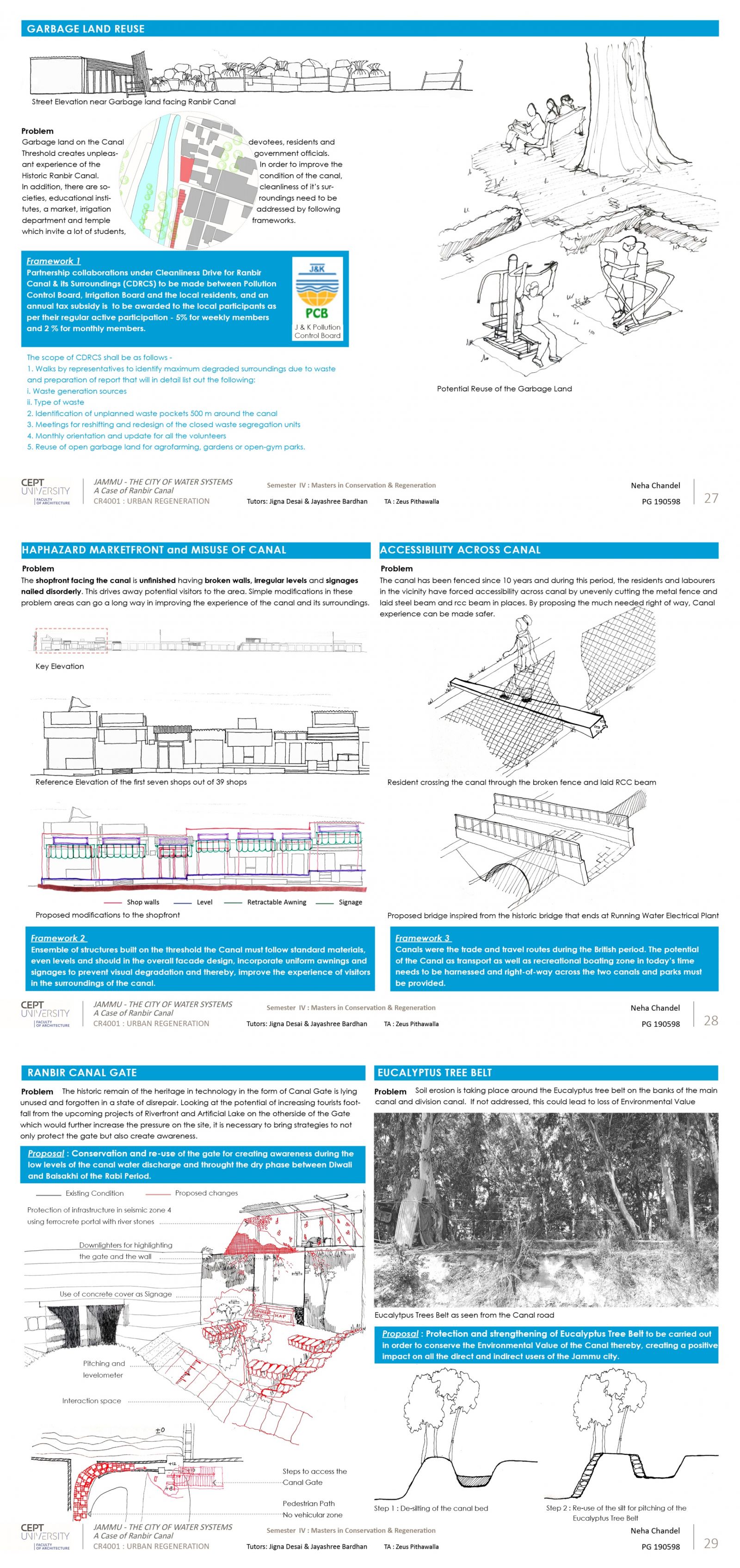Your browser is out-of-date!
For a richer surfing experience on our website, please update your browser. Update my browser now!
For a richer surfing experience on our website, please update your browser. Update my browser now!
The historic urban tissue of the Jammu City hills is representative of its irrigation channels and water systems of the settlements spanning Dev Dynasty (800-1500) up to Dogra Dynasty (1841-1947). The channels within the city were converted into roads leaving today the Nallahs that were once located on the periphery of the fort wall. These remaining nallahs and detention tanks stand today as an example of water conservation, irrigation as well as drainage construction typology of this big range of settlements. Similarly, outside the once fortified city, the Ranbir Canal was build by the Dogra ruler Maharaja Ranbir Singh for the City of Jammu and Ranbir Singh Pura. The canal stands today as an exemplary construction typology for irrigation of the late 19th century. Water is our common heritage and the waterscape adds environmental value to the City. The areas around the waterscape matrix of Jammu represents its historic urban environment and need to be sensitively planned.
